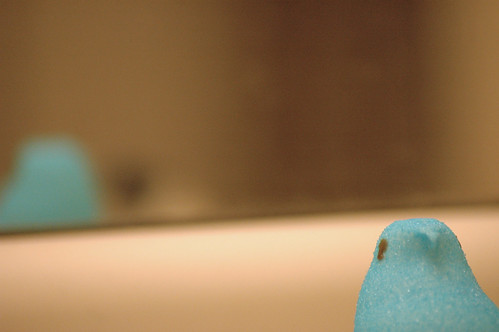Is this post about Twitter?
No. But I did find this site originally from a random tweet David Warlick (@dwarlick) chirped onto the Twitterverse a week or so ago. It has idled alone in its own browser tab until now. It is one of those things I have been meaning to share here -particularly with my literary and social studies types- for some time. Speaking of Twitter, I have been finding it to be quite interesting as of late. It seems as though I have hit some magical confluence between the number of people I follow and the professional alignment of the crowd… or something. In fact, my comment(s) to this very entertaining post by David Jakes contain quite the thumb-typed error. Perhaps you should check it out.
I have a pile of local folks on Twitter with whom I frequently share. However, I also follow a fair number of more “distant” folks there who wouldn’t recognize me at point blank range. I also recently found this Google document which attempts to help educators find like minded folks to connect to. When I finally get a few minutes to play with this spreadsheet, Twitter might just be even more fun. I have been meaning to say something about this loved/hated service, and now might be as good as any. By now, I think I’ll now go back and change the section heading for these first two paragraphs.

Then what is it really about?
Sorry to derail my own post with a blather on microblogging. Perhaps this post is the first concrete proof of what the little blue birdie is doing to my brain. My real reason for the original link is to highlight an amazingly in-depth analysis. Martin Krzywinski’s Lexical Analysis of 2008 Presidential and Vice-Presidential Debates is quite a study in detail. This page will likely appeal to anyone with a curiosity toward communication, human speech, or even scientific methodology in general. My assistant principal (who was an outstanding chemistry instructor a few years back) and I had a brief geek-fest in first looking over this study.
Personally, I love throwing out divergent studies in my Dual-Credit Biology class to capture the attention of a literary sub-population of the class. Since the first unit of the course concerns the “nature of science”, we needn’t spend 100% of our efforts within the field of biology- just my personal bias. This year in particular, I have made an attempt to highlight solid examples of scientific thinking in all realms of life. A large percentage of the 24 students in my class will not move on to study biology, or any other field of natural science beyond high school. It is these individuals I am paying particular and focused attention to this year. Real scientific processing can happen beyond bees, trees and DNA, and it is one of my goals to drive that point home.
The “real” message?
I won’t even begin to trot out the number of “Aha’s”, inferences, and questions I generated while reading through this lexical analysis. However, doing so instantly made me think of using this work as a “primary document” in some sort of “Three Story Intellect“-type breakdown. On a side note, it frustrates me to see that this learning strategy, is rarely attributed to Robin Fogarty when posted online. I suppose I’ll have to post my own (properly attributed) revision of this in the near future. *tweet*
To me, it is quite interesting to see how similar large parcels of human speech really are. I would have thought there were larger differences in parts of speech, etc. However, the more I think about it, sentence construction by intelligent individuals (or really well-coached individuals) probably is more or less stable. Now word choice is a different matter altogether. The analysis of word clouds here is inspiring. I have several colleagues who have recently taken to the visualization power of word clouds. The problem is, few of us really know how to use them to their potential. I thought I might… and then I saw this website. I am excited to learn more. This is a great resource for inspiration.

Tweet the vote:
Sorry about filling your screen with errant links today. There are only a few days left before the election. Fit in this little gem where appropriate before then. Can you summarize this treatise in 140 characters or less? If so, send out a tweet!
Artwork thanks:
Mundee, Laura. “Umm…hello?.” Flickr. 24 Mar 2007. 27 Oct 2008
<http://www.flickr.com/photos/bookgrl/432821035/in/photostream/>.
Antunes, Vitor. “Snake’s Mouth.” Flickr. 25 June 2007. 27 Oct 2008
<http://www.flickr.com/photos/janeladeimagens/624765887/>.